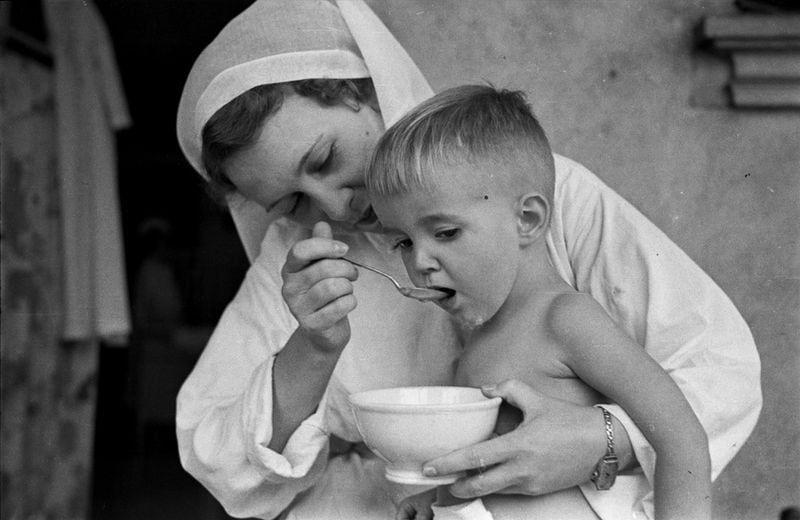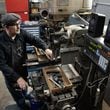ON TV
“A Story of Hope and Will”
8 p.m. Tuesday, May 26, on PBA 30
ONLINE
For a look back at Children's Healthcare of Atlanta patient stories as Children's marks its 100-year anniversary, go to www.choa.org.
In 1915, Children's Healthcare of Atlanta opened its doors with 20 hospital beds in two cottages in Decatur. It was called the Scottish Rite Convalescent Home for Crippled Children.
A century later, Children’s Healthcare of Atlanta is a top-ranked pediatric health care system with three hospitals — Scottish Rite Hospital, Egleston, and Hughes Spalding — with more than 850,000 patient visits every year.
Children's will celebrate this 100-year milestone with a look back at its history with patient stories online (www.choa.org) and a TV documentary ("A Story of Hope and Will"), scheduled for 8 p.m. Tuesday, May 26, on PBA 30, one of Atlanta's PBS stations.
The documentary will highlight Children’s remarkable achievements — from Scottish Rite Medical Director Dr. Hiram Kite developing a method for treating clubfoot in 1939 to the hospital’s first kidney transplant in 1980, its first liver transplant in 1987, its first heart transplant in 1988, its first cardiac ablation in 1992 (see story below). The documentary will also tell stories about patients whose lives were enriched, and in some cases saved, and the doctors, nurses and others who took care of them.
Here’s a look at some of the people and their stories featured in the documentary:
Robert Simmons, clubfoot procedure
As a baby, Robert Simmons had surgery to repair a clubfoot. But by the time he was about 10, the tendons connecting the leg muscles to the foot bones were again too tight, causing the foot to twist inward.
This was back in the early 1940s, and Simmons’ parents took their son to Scottish Rite Hospital for what was then a cutting-edge clubfoot procedure. Dr. Hiram Kite, medical director of Scottish Rite, created what was known as the “Kite Method,” a nonsurgical approach consisting of repeated gentle manipulations and castings to achieve the correction.
Now 84, Simmons, who lives in Mississippi, remembers getting the itchy, stinky cast sawed off his leg. But mostly, he remembers walking and moving without any problems ever since. Simmons, who grew up in La Grange but now lives in Mississippi, said his left foot is one-half-size smaller than the right, but otherwise you would never know the difference. He ended up working as a carpenter building scaffolding.
“To take a child that young and straighten that foot out and not have any problems with it, it’s a miracle really to me,” Simmons said in the documentary.
Hanna Dafne Pintozzi, first cardiac ablation at Children’s Healthcare
As a child, Hanna Dafne Pintozzi’s heartbeat sped up to over 200 beats per minute for days at a time, and then her heart would suddenly stop. Suffering from a condition in which the electrical signals in the heart’s upper chambers fire abnormally, she had two heart attacks by the time she was 10.
Living with her family in rural Venezuela, Pintozzi’s father read a story in Reader’s Digest about Emory University doing cutting-edge heart research and then learned about collaborative research for children at Egleston. In 1989, the family decided to head to Atlanta to try to save their daughter.
At first, Pintozzi had open-heart surgery, but doctors knew it wasn’t enough long-term. Advances were being made but the type of procedure she needed was not yet available, so doctors needed to buy time.
Pintozzi recalled a nurse named “Daphne” who helped keep her spirits up.
“There was something about her. She shared my middle name, which was a point of connection, and whenever she walked into my room, she came in with a big, bright smile, and she would always say, ‘We are going to work on getting you out of here,’” she said in an interview with The Atlanta Journal-Constitution.
Finally in 1992, Pintozzi became the first patient at Children’s to undergo ablation surgery, which involves a long, thin tube that is guided through a vein in the arm or leg and inserted into the heart to eliminate the heart muscle cells that are triggering the arrhythmia (irregular heartbeat). Once the problem area of the heart is pinpointed, the tube sends waves of high-frequency radio waves into the muscle cells and destroys them.
Today, cardiac ablation is considered fairly routine with more than 2,000 kids undergoing this procedure since then at Children’s Healthcare of Atlanta.
Since that surgery, Pintozzi, now 36, went on to get married, and she is a mom to four children. Pintozzi, who lives in Acworth, is CEO of a publishing company, American Book Company, which specializes in test preparation books and software for exit exams.
Pintozzi said she missed out on a typical childhood, spending many holidays, even birthdays in the hospital.
“I don’t know what it’s like to play at a playground,” she said, “but I do know the heart of people fighting for my life, working to give me a smile, doctors and nurses really rooting for me, and sharing my passion to live.”
Mary Hutcherson, the daughter of Dr. Leila Daughtry-Denmark, who was the first intern at Henrietta Egleston Hospital for Children in 1928
Dr. Leila Daughtry-Denmark continued to work at Egleston for 61 years. Her research helped develop a vaccine for whooping cough. During Denmark's more than 70 years as a pediatrician, she preached preventive medicine and old-school parenting techniques. Denmark died in 2012 at the age of 114.
Hutcherson said her mother would go out of her way to talk to parents to try to “figure out what’s going wrong.”
“She believed in a good schedule, a good diet, discipline for the children — things that may in some cases have gone by the board now — but particularly she believed in getting the child well,” Hutcherson said in the documentary. “And good parenting. That was her mantra all along: We need good parents.”
About the Author







